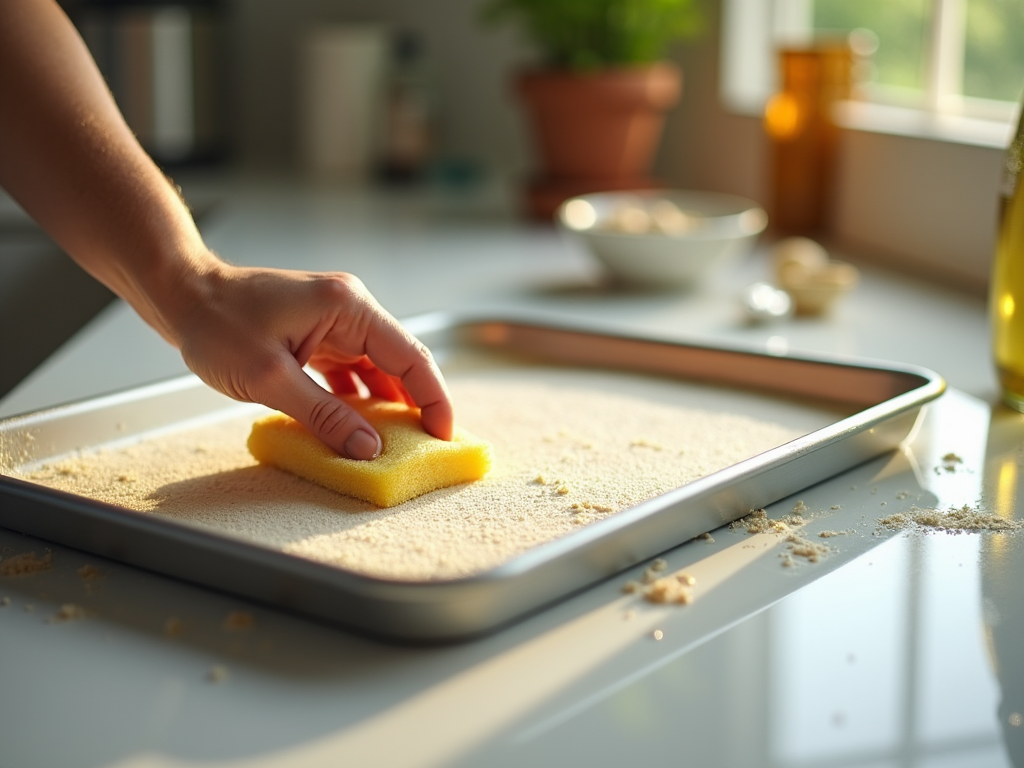Baking sheets are a kitchen staple, loved for their versatility and practicality. However, they can easily fall victim to stubborn grime and burnt residue. The good news is, with the right techniques, you can restore your baking sheets to their original gleam. This article will guide you through effective methods for cleaning baking sheets, ensuring they look as spotless as the day you bought them.
Understanding the Material of Your Baking Sheets

Before diving into cleaning methods, it’s crucial to understand the type of material your baking sheets are made from. Whether you’re dealing with stainless steel, aluminum, or non-stick, different materials require specific approaches to avoid damage while cleaning. Stainless steel baking sheets are durable but can lose their sheen if scrubbed too vigorously. Meanwhile, aluminum sheets are prone to discoloration but often clean well with a gentle approach.
Non-stick baking sheets require special care to maintain their coating. Harsh scrubbers or potent chemicals can strip away this coating, rendering them useless. Identifying your baking sheet material will ensure you choose the right cleaning technique, preserving the lifespan and functionality of your sheets.
Starting with a basic cleaning method can salvage lightly soiled baking sheets. For everyday cleaning, you’ll need warm water and a mild dishwashing liquid. Begin by soaking the baking sheet for a few minutes to loosen stuck-on food particles. Then, use a soft sponge or cloth to gently wipe away grease and grime. Rinse thoroughly with water, and let it dry completely before storage.
If stains persist, a paste made from baking soda and water can offer extra scrubbing power. Apply this paste to the surface, giving it time to work its magic before scrubbing gently with a non-abrasive sponge. Rinsing well after cleaning prevents any residue that might affect your next batch of cookies or pastries.
Deep Cleaning for Stubborn Stains

For baking sheets plagued by stubborn stains and burnt-on remains, a more intensive cleaning method might be necessary. Begin by sprinkling baking soda generously across the surface, followed by a layer of hydrogen peroxide. Cover with another layer of baking soda, and let the sheet sit for at least two hours, or overnight for the best results.
When you return, you’ll find the baking soda and hydrogen peroxide mixture has loosened the stubborn grime. Use a soft brush or sponge to gently scrub the surface, lifting away the toughest stains without damaging your baking sheet. Rinse thoroughly afterwards to ensure all cleaning agents are removed.
Preventative Care for Long-Lasting Baking Sheets
Preventative care is key to maintaining baking sheets that look brand new. Avoid leaving sheets in a dirty state for extended periods, as the residue can harden and become more challenging to remove. Additionally, consider using parchment paper or aluminum foil to line your sheets, reducing direct contact with food and oils that cause damage.
Regular maintenance includes immediate cleaning after use and ensuring sheets are completely dry before storing. A thorough drying process prevents rust and other moisture-related damage, especially for metal-based baking sheets. By implementing these simple preventative measures, you can extend the life of your baking sheets significantly.
Conclusion
Restoring your baking sheets to a pristine state isn’t as daunting as it might seem. By identifying the material, applying the appropriate cleaning methods, and embracing regular maintenance, you can transform your well-used baking sheets to look like new again. Not only will this improve the aesthetics of your kitchen, but it will also enhance your baking results, ensuring evenly cooked and beautifully presented dishes.
Frequently Asked Questions
1. Can I use a dishwasher for cleaning baking sheets?
While some baking sheets are dishwasher safe, it’s generally not recommended as the intense heat and detergent can discolor or damage materials, especially aluminum and non-stick surfaces. Instead, hand wash using mild detergent and warm water.
2. How often should I deep clean my baking sheets?
Deep cleaning should be conducted based on usage frequency. For avid bakers, monthly deep cleaning can prevent buildup, while less frequent users might only require it once every few months.
3. Is vinegar effective for cleaning baking sheets?
Yes, vinegar can be an effective cleaning solution. Combining vinegar with baking soda creates a foaming reaction that helps lift stubborn stains and grime. Allow the mixture to sit for a while before scrubbing gently.
4. Can I fix a scratched non-stick baking sheet?
Once a non-stick coating is damaged, it can’t be restored. However, you can minimize further damage by avoiding metal utensils, opting for silicone or wooden alternatives, and using gentle cleaning methods in the future.
5. What are natural alternatives for cleaning baking sheets?
Natural alternatives include baking soda, vinegar, and lemon juice. These agents are effective and environmentally friendly, providing cleaning solutions without harsh chemicals.
